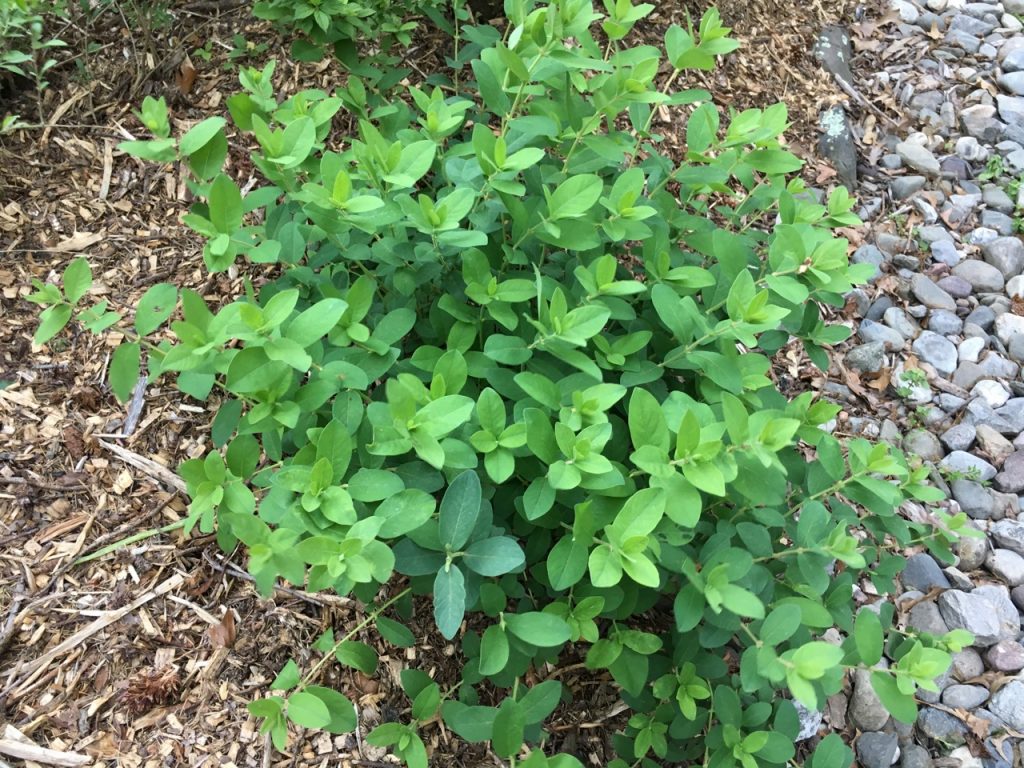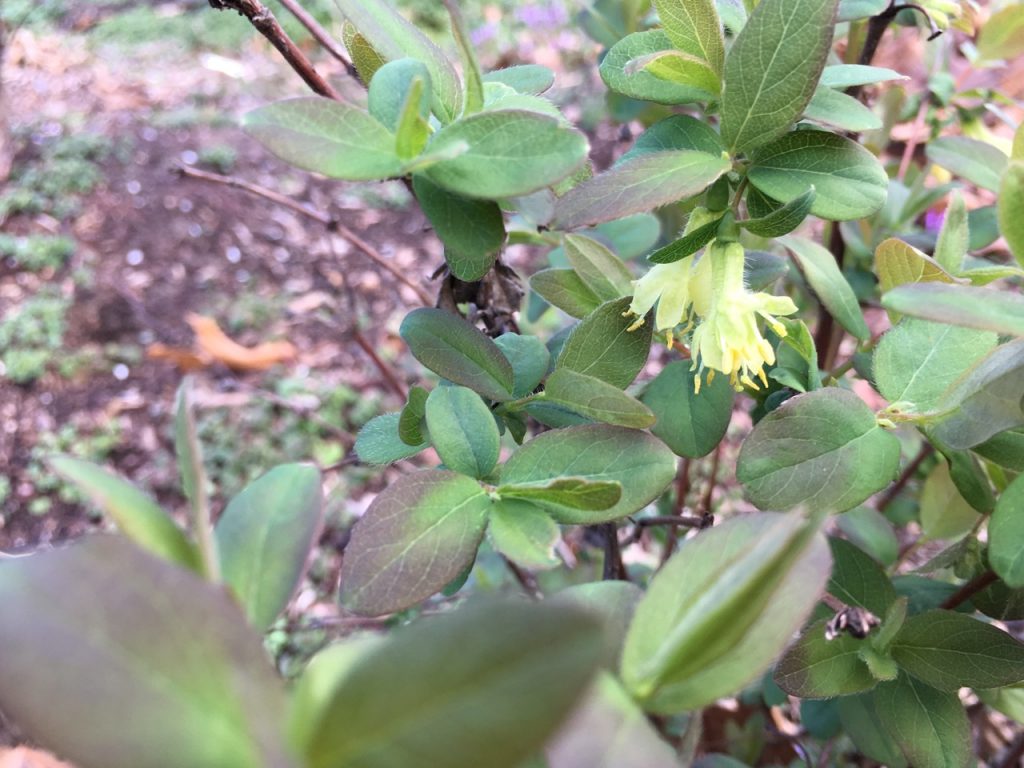Harvesting Honeyberry Haskap Lonicera caerulea provides you with an overview of honeyberry, followed by how to harvest and when and some of the uses of the wonderful edible honeysuckle.
I have four honeyberry plants in my suburban landscape. My plants are still small, but they have been producing for the last couple of years. This is one of my favorite plants in the yard, primarily because it is the first plant in the spring to provide fruit. To me, it signals the start of another growing and harvest season.

Harvesting Honeyberry Haskap Lonicera caerulea – Plant
Honeyberry Background
Honeyberry plants, with a Latin name of Lonicera caerulea, are a deciduous shrub that is a member of the honeysuckle family and is also called blue honeysuckle, and haskap. They are extremely cold hardy, bears fruit, and is very long lived with a 50+ year lifespan.
How to Grow Them
The very hardy plant has some varieties that are hardy down to USDA zone 2. Honeyberries grow best in moist, well-drained soil. They may perform better in clay soils than sandy soils and do benefit from a good layer of organic mulch. The ideal pH is 6.5, but they are adapted to a pH range of 5 to 8. It grows in sunny or shady locations. The shrub will grow from 3 to 8 feet tall, with oblong berries ½ – 1 inch or more in length and alternate leaves.
Blooming
These are some of the earliest blooming plants in my garden. My plants bloomed in February this year, but usually the bloom in early March. Everything has bloomed early this year due to a warm winter and warm spring.
Fruiting depends on availability of pollinators when plants are blooming. They require proximity to another unrelated honeyberry plant for pollination by bees and other insects. Most honeyberries, like apples, need a different honeyberry plant for pollination. Both plants must bloom at the same time.

Harvesting Honeyberry Haskap Lonicera caerulea – Bloom
Harvesting
Honeyberries produce fruit on year-old wood. To find the fruit look underneath the branches close to the older stem. Some varieties produce 10+ lbs of berries after 5 years, others produce 1-2 lbs. They bear best in sun in the North, and needs some protection from sun in the South.
Make sure berries are a dark blue color all the way through before picking for the sweetest taste. When they are ready to pick, just give them a slight tug and they should come right off the plant.
Edible Fruit
It is said to taste like raspberry, blueberry, kiwi, cherry, or grapes, depending upon the taster. The sweet, unique flavor that is good for fresh eating or making preserves, pastries, juice, wine, jams, ice cream, yogurt, candies, and sauces.

Harvesting Honeyberry Haskap Lonicera caerulea – Fruit
Please Help our Small Business Out
If you are local you can support our small business by buying plants at Great Escape Nursery . You can also help us by shopping on Amazon just by going through our storefront! As an Amazon Associate, I earn commission from qualifying purchases. There is no additional cost to you! Our storefront at Amazon is located at this link: https://www.amazon.com/shop/greatescapefarms. Buying from either location helps our business produce more content for you.
If you like this blog post and want to find out more about Great Escape Farms check out our Great Escape Farms Overview. Here you get an overview of all the wonderful stuff we are involved in. Also, sign up for our email list at the bottom of the linked page.
Great Escape Farms is now on Patreon! You can support us for as little as $1. If you enjoy our work and want to help support us, please check out our Patreon page at: https://www.patreon.com/gef.
The Video
Check out the video below titled Harvesting Honeyberry Haskap Lonicera caerulea
Thanks for viewing the Harvesting Honeyberry Haskap Lonicera caerulea post.
Please give us your thoughts on Harvesting Honeyberry Haskap Lonicera caerulea by commenting below.
If you like plants check out Great Escape Nursery.

Leave a Comment